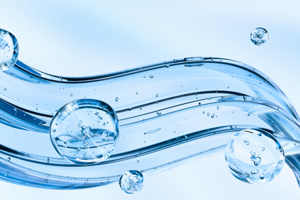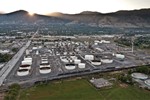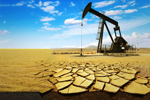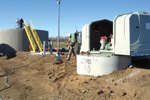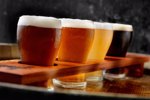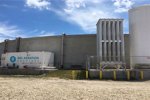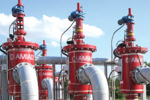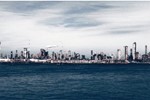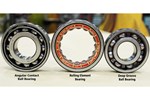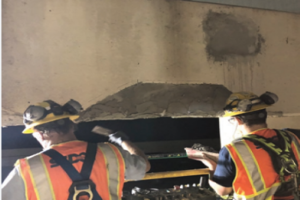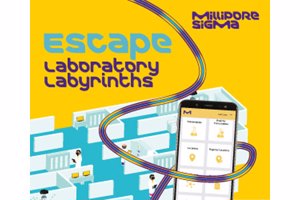INDUSTRIAL WATER AND WASTEWATER TREATMENT
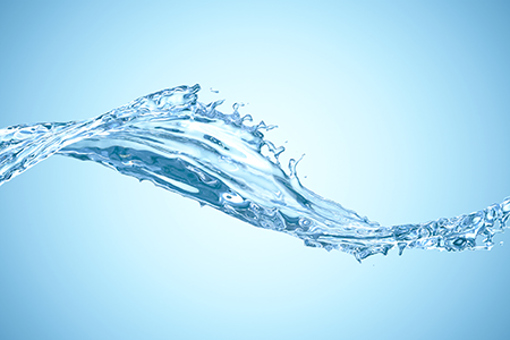 The New Imperative For Water Treatment: A Shift From Compliance To Efficiency
The New Imperative For Water Treatment: A Shift From Compliance To Efficiency
As water scarcity and energy costs rise, new ultrafiltration membrane technologies deliver higher flux, longer lifespan, and reduced fouling—turning water treatment from a compliance task into an efficiency opportunity.
WATER AND WASTEWATER SOLUTIONS FOR THE OIL AND GAS INDUSTRY
-
Validating Your Ballast Water Management System
Bio-UV, a manufacturer of ballast water management systems (BWMS) that utilize UV disinfection, was looking for a reliable and accurate indicative analysis to validate the installation of their BWMS system during commissioning. Read the full case study to learn more.
-
Flow Meter Helps HollyFrontier's Woods Cross Refinery Measure Flare Gas For Safety And Environmental Compliance
When the plant team at HollyFrontier’s Woods Cross Refinery, near Bountiful, Utah, needed mass flow meters to measure flare gas to the main flare header, the team drew on its past metering experiences for this difficult application.
-
Fighting For Florida's Surface-Water Standards
Late last month, a panel of regulators appointed by Governor Rick Scott narrowly approved the first changes to Florida’s surface-water quality standards since 1992. Marked with adamant support on one side and passionate protest on the other, the sweeping amendment has left questions about how clean Florida’s water will be.
-
Nationwide Water Shortages Demand New Innovative Solutions In Clean Water
In the spring of 2019, U.S. government-funded research on watersheds revealed a dire outlook for the future of water availability in the United States. Between population growth and climate change, the study reports that “serious water shortages'' are likely to occur within the next 55 years.
-
Water Is Energy
More than 2,000 years ago, Greek and Roman engineers harnessed the power of water to drive grain mills, and the technology soon spread as far as China, where it was used to forge iron. By the 4th century, the Romans had scaled up water wheel technology to build a massive flour plant in Arles, France, powered by 16 overshot water wheels. During the Renaissance, Leonardo da Vinci sketched out visions of water-driven sawmills, forges, factories, and spinning works.
WATER AND WASTEWATER SOLUTIONS FOR THE FOOD AND BEVERAGE INDUSTRY
-
Major Pork Producer Saves Project Money With S&L Pump Station
When a major pork producer sought cost-effective pumping solutions to one of its Kansas facility's wastewater systems, the search led to the installation of a Smith & Loveless above-grade pump station.
-
(E)-2-Nonenal In Beer
Numerous compounds contribute to changes in beer flavor as it becomes stale. One of these compounds, (E)-2-nonenal, has been investigated as a major source of the papery/cardboard flavor that develops in aged beer.
-
MBBR Technology Helps Plant Maintain Discharge Compliance, Achieve Sustainable Growth
A bacon processing plant in the Midwest was overloaded by more than 50%. Even though the system continued to maintain compliance, the plant proactively decided to expand its wastewater treatment facility to ensure they met their growing demand and maintained their standing as exemplary corporate citizens and environmental stewards.
-
Challenges And Solutions To Treating Beverage Wastewater
Discover how one beverage manufacturer was able to balance producing a quality product while also undertaking the challenging of reclaiming and treating its effluent.
-
Wastewater Treatment Professionals In The Poultry Industry Are Using SDOX® Technology To Overcome Operational Challenges
This is the second in a series of articles and case studies examining the emergence of sustainably-driven innovation within the wastewater treatment functions of the food and beverage industry as sustainability and production issues intersect and influence how companies manage their wastewater.
WATER AND WASTEWATER SOLUTIONS FOR THE POWER GENERATION INDUSTRY
-
Rounding Up The Water, Clean Energy, And Climate Bills In The 85th Texas Legislative Session
We’re entering the home stretch of the 85th Session of the Texas Legislature.
-
Membrane Technologies In Containerized Units Allow For Installation In A Small Footprint
After an international tender process, the Israel Electric Company (IEC) chose Fluence to design, manufacture, and supply containerized ultrapure water production systems for use as makeup water for heat-recovery steam generators (HRSG) and for NOx emission reduction at recently upgraded power plants across Israel. More than 15 units of 20 m3/h production modules, each fitted in two 40-foot shipping containers, were provided to seven power plants. Their compact design allowed for ease of installation, operation, and maintenance while meeting the customer’s demanding engineering standards.
-
Coal Ash Pond Polishing Filter System
A power plant's wastewater was being contaminated by coal ash generated from power plant operations. The plant was searching for a treatment/polishing system to maintain a TSS of less than 25 PPM.
-
Pile Cloth Media Filtration For Clean Utilities
Cooling towers and boilers consume the most fresh water in the industry, with industrial process waters carrying the balance. Power plants and refineries use more water volume for the cooling process than any other area of the facility. Mining and food and beverage industries consume higher volumes for their processes. Clean water may come from a range of sources, including clarified surface waters, groundwater or properly treated wastewater (reuse) sources.
-
Energy-Water Nexus Lessons Learned From The State Of Texas
By making strategic choices to maximize energy-water efficiencies, we can help protect our supplies in advance of our next drought. Here are three ways that work.
WATER AND WASTEWATER SOLUTIONS FOR INDUSTRY
-
Major Pork Producer Saves Project Money With S&L Pump Station
When a major pork producer sought cost-effective pumping solutions to one of its Kansas facility's wastewater systems, the search led to the installation of a Smith & Loveless above-grade pump station.
-
Validating Your Ballast Water Management System
Bio-UV, a manufacturer of ballast water management systems (BWMS) that utilize UV disinfection, was looking for a reliable and accurate indicative analysis to validate the installation of their BWMS system during commissioning. Read the full case study to learn more.
-
(E)-2-Nonenal In Beer
Numerous compounds contribute to changes in beer flavor as it becomes stale. One of these compounds, (E)-2-nonenal, has been investigated as a major source of the papery/cardboard flavor that develops in aged beer.
-
The Basics Of Anti-Friction Pump Bearings
When we think of pumps, we seem to focus on what material is being pumped, how fast, how efficient and overall reliability. However, what we tend to not think about as much are the little heroes inside the pump that are making it all go around, no pun intended.
-
Flow Meter Helps HollyFrontier's Woods Cross Refinery Measure Flare Gas For Safety And Environmental Compliance
When the plant team at HollyFrontier’s Woods Cross Refinery, near Bountiful, Utah, needed mass flow meters to measure flare gas to the main flare header, the team drew on its past metering experiences for this difficult application.
-
MBBR Technology Helps Plant Maintain Discharge Compliance, Achieve Sustainable Growth
A bacon processing plant in the Midwest was overloaded by more than 50%. Even though the system continued to maintain compliance, the plant proactively decided to expand its wastewater treatment facility to ensure they met their growing demand and maintained their standing as exemplary corporate citizens and environmental stewards.
-
Challenges And Solutions To Treating Beverage Wastewater
Discover how one beverage manufacturer was able to balance producing a quality product while also undertaking the challenging of reclaiming and treating its effluent.
-
Rounding Up The Water, Clean Energy, And Climate Bills In The 85th Texas Legislative Session
We’re entering the home stretch of the 85th Session of the Texas Legislature.
-
Fighting For Florida's Surface-Water Standards
Late last month, a panel of regulators appointed by Governor Rick Scott narrowly approved the first changes to Florida’s surface-water quality standards since 1992. Marked with adamant support on one side and passionate protest on the other, the sweeping amendment has left questions about how clean Florida’s water will be.
-
Membrane Technologies In Containerized Units Allow For Installation In A Small Footprint
After an international tender process, the Israel Electric Company (IEC) chose Fluence to design, manufacture, and supply containerized ultrapure water production systems for use as makeup water for heat-recovery steam generators (HRSG) and for NOx emission reduction at recently upgraded power plants across Israel. More than 15 units of 20 m3/h production modules, each fitted in two 40-foot shipping containers, were provided to seven power plants. Their compact design allowed for ease of installation, operation, and maintenance while meeting the customer’s demanding engineering standards.

